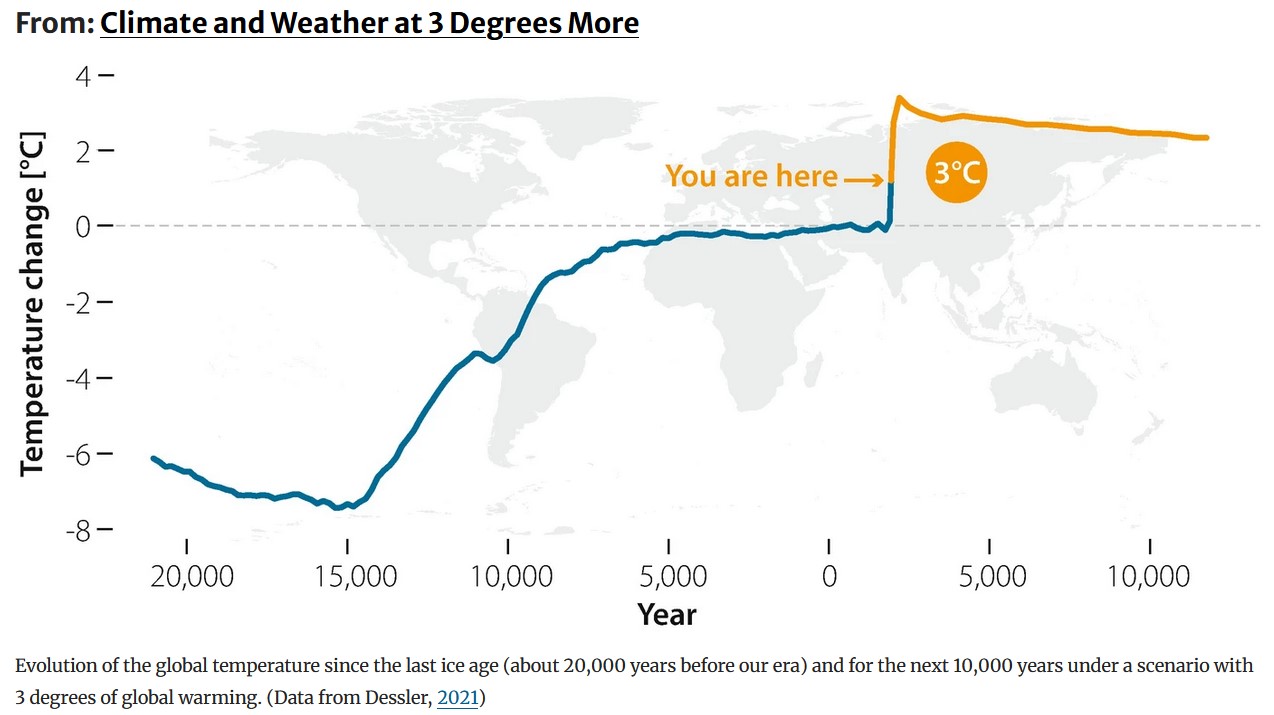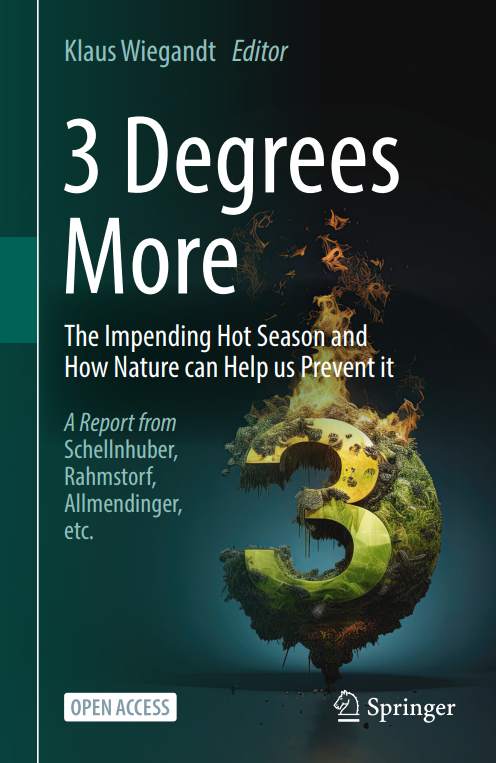Is a 3°C World Closer Than We Think?
In Bonn, negotiations have wrapped up for SB 60, the halfway-house conference between climate COPs (Conference of Parties).
While politics are progressing – most recently in areas of climate finance and loss and damage – all agree that progress is not happening anywhere near fast enough. The target of the Paris Agreement to limit warming to 1.5°C is still believed to be possible, but only just – with the UN Secretary-General himself noting, “It’s make or break for the 1.5°C limit”.

2024: Already Breaking Records
The changing climate is already making itself known – 2024 has a good chance to become the warmest year on record, with last month’s temperatures breaking all previous May records. The effects of El Niño are combining with a warming climate to bring deadly flash flooding across Afghanistan, Iran and Pakistan, wildfires in Brazil’s Pantanal wetlands, historic heatwaves in the US, and floods, fires and heatwaves in Europe – to name a few.
As doubt grows over whether nations are actually focusing on 1.5°C alignment, an extensive report – newly available in English – casts a frightening picture over what the future will look like under current policies – 3°C hotter than the historical average.
3 Degrees More
The freely-available and wide-ranging report is entitled “3 Degrees More: The Impending Hot Season and How Nature Can Help Us Prevent It”. Edited by Klaus Wiegant of Germany’s Foundation Forum für Verantwortung (Foundation Forum for Responsibility), it brings together professional perspectives about what a 3°C world would look like, with an emphasis on just how catastrophic it would be for humanity.
The preface notes that a 1.5°C world would be “catastrophic for millions of people, yet not a serious threat to humanity”; a 3°C world, however, “would have catastrophic impacts on humans and other living beings all around the world”. The preface concludes with the report’s intention: “Only if the public becomes aware of what such a world would really look like can democratic processes be mobilised to limit global warming at least to 2°C. But this goal can be achieved only if we act NOW!”
A 3°C World

The title page of the 3 Degrees More report.
So, what would a 3°C world look like exactly? The report’s first essay, by Stefan Rahmstorf, explores the following:
- Extreme heat: An expansion of deadly heat waves, making working or even staying outdoors extremely dangerous across many land areas. More humid areas will see even greater lethality given the human body’s inability to cope at a ‘wet bulb’ temperature of 35°C.
- Extreme precipitation and droughts: an increase in overall precipitation and incidences of heavy rainfall events will see devastating flooding in some areas, while some regions will see almost no rainfall, leading to deadly droughts. Changes to the jet stream can lead to extreme weather situations across the northern hemisphere, which could lead to widespread crop failures. Such conditions are ripe for the destabilisation of nations.
- Tropical cyclones: an increase in tropical storm intensity has already been observed, aggravated by heavy rainfall. Sea level rise will exaggerate the storm surges that accompany such storms, leading to severe risks for coastal settlements and infrastructure across the tropics and sub-tropics.
- Sea level and ice sheets: warming accelerates the melting of continental ice masses, which accelerates sea level rise. Such ice sheets also have ‘tipping points’, a certain point at which they begin melting unstoppably, no matter what humanity tries to do to stop it happening. If the Greenland ice sheet melts, global sea levels will rise by an astonishing 7 metres – and it’s estimated the tipping point is between 1 and 3°C of global warming.
- Tipping points: the Greenland ice sheet is not the only tipping point. Others include the Amazon rainforest: the Amazon is facing increasing droughts, and at a certain point the ecosystem may convert to a savannah-like state, releasing carbon rather than storing it in trees, thus accelerating climate change. In the North Atlantic, the Gulf Stream brings warm air and water to Europe, keeping it much warmer than other areas of the world at a similar latitude; but as Greenland melts, this flow becomes disrupted, and could destabilise Europe’s weather systems, potentially sending it into a deep freeze.
- Self-amplification of global warming: While each of the above tipping points is serious in itself, they could also feed into each other to create a catastrophic cascade. As each tipping point is passed, it contributes to the increasing warming of the world’s climate. The thawing of permafrost in northern latitudes, and the carbon it releases as it does so, as one such example. This means that, even if we manage to limit our own contributions to climate change to – for instance – 2°C, the effects of self-amplification could take this temperature much higher.
Rahmstorf concludes by saying, “ No one can say exactly what [a 3°C] world would look like—it would be too far outside the entire experience of human history. But almost certainly this earth would be full of horrors for the people who would have to experience it.”
Taking Action
The report also covers the effects of climate change on biodiversity, agriculture, civil society, and the economy. None of the outlooks are positive. However, the report’s second section focuses on the power of nature-based solutions to mitigate climate change. For instance, ecosystems such as peatlands and rainforests are powerful carbon stores, with the right protections in place. There are opportunities for developing infrastructure that works alongside nature, rather than against it, bringing benefits to biodiversity, climate, and people alike.
The report concludes with the importance of informing and empowering the public. Educating people about what to expect from climate change – including the differences between if nations do or do not act sufficiently – is vital to spark democratic pressure. “The experience of the last 10 years with the consequences of increasing global warming leads to fears that the tipping point for many societies could occur well before +3 °C is reached,” concludes Wiegandt. “Together we still have the power to prevent this from happening!”
About the Author: Jacob Ashton
POPULAR
COMMENTS
- Robert Schreib on Electricity generation prices may increase by as much as 50% if only based on coal and gas
- Robert Schreib on China made a historic commitment to reduce its emissions of greenhouse gases
- Lee Nikki on COP30: Climate Summit 2025 – Intro Climate Action Event
- Hollie Bailey on Leaders doubled down on fossil fuels after promising to reduce climate pollution
- Malcolm R Forster on Mythbusters tests global warming theory – does CO2 warm air?